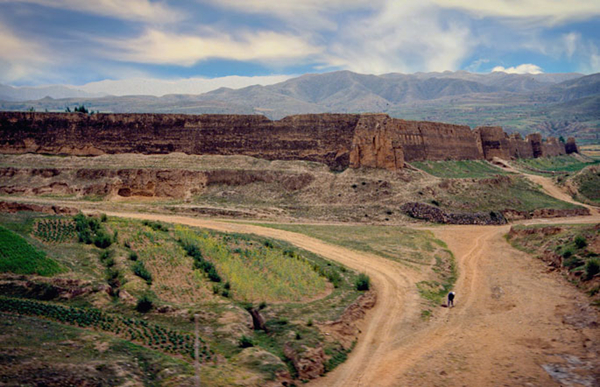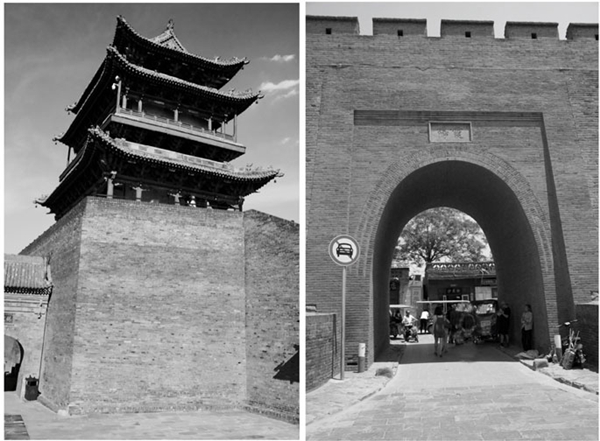News
Pingyao: A walk through historic China
Updated:2019-05-14 15:59By Bruce Connolly ( chinadaily.com.cn)
Former fortress settlement in northern Shanxi 1987 [Photo by Bruce Connolly/chinadaily.com.cn]
During my initial China experience in July 1987, I was fascinated with the scenes beyond the windows of my train from Mongolia to Beijing as we headed through a mostly dry Shanxi landscape, broken by stretches of an earthen Great Wall. It was there I first saw the remains of walled towns, which instantly fascinated me because we did not have them back in my native Scotland.
Years later I would discover they were fortress settlements set up over 1,000 years ago to help protect China’s northern borders. Throughout China's extensive and turbulent history, military defense was an important factor in city design and structure. My travels would show me that walled towns were in fact very common throughout much of the country, with the Ming and Qing periods seeing prolific wall building in China.
I simply loved visiting walled towns, marveling at the construction of the walls before climbing up their often broad tops to peer over the battlements at the ancient streets below. Some such as Xi'an still have grand walls enclosing an historic core, while others may have surviving gate towers as reminders of former glories. More often the clue to long-gone walls would be names including a suffix such as "-men". Qianmen, for example, was the Front Gate on Beijing's Ming Dynasty Inner City walls.
Walls and gates of Pingyao 2016 [Photo by Bruce Connolly/chinadaily.com.cn]
Then there's Pingyao, one of China's classic and best-preserved walled towns that I was fortunate to visit in 2016. Located in Shanxi province just 715 kilometers southwest of Beijing, the city is famed for its importance in Chinese economic history and its well-preserved Ming and Qing layout. Amazing experiences straight out of a classic film production await travelers. Its UNESCO World Heritage old town with a history of 1,000 years serves as a surviving example of several dynastic periods, a feeling enhanced when a "police patrol" would march along in their 19th century garb, banners held high while "maintaining order" among the bustling crowds.
Tourists will find it easy to wander around Pingyao, thanks to its relatively small area, measuring roughly 1.6 km in length and breadth. It also delivers endless possibilities to discover history and indulge in photography, as Pingyao has over 100 streets and lanes in this city's Ming and Qing urban layout with close to 4,000 17th- to 19th-century shops and residences. Pingyao remains a thriving community with many continuing to live in the old town's courtyard homes, going about their daily lives alongside and often indifferent to the tourism boom so noticeable today along its main streets.





